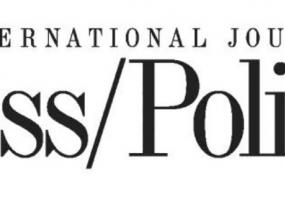Digital-born news sites are ‘coming of age’, three-year research project shows

Digital-born news outlets have developed to become a well-established part of the media landscape. They now face many of the same challenges as legacy media, including the need to establish sustainable funding models, attract new audiences and diversify distribution strategies, according to a new Reuters Institute report which tracks how digital-born news sites have evolved between 2016 and 2018.
As they build paying audiences, digital-born news outlets are also emphasising quality journalism over ‘clickbait’ and experimenting with innovative new ways to connect with wider, non-traditional audiences.
The study, Coming of Age: Developments in Digital-Born News Media in Europe, builds on an earlier report from 2016. For the latest report, researchers re-visited all 13 digital-born news outlets from the original study to understand the shifting challenges challenges such outlets have faced over the past two years. The study looked at outlets in the UK, France, Germany and Spain including Brut, Correctiv, El Confidencial, HuffPost, Krautreporter, Mediapart and The Canary.
Of the original 13 outlets studied two years ago, all continue to operate in 2018, and some have expanded. Eight rely on advertising as a major part of their strategy. Less enthusiasm was expressed for native advertising than in 2016.
Six of the case study organisations are seeking income through reader revenue – either through subscriptions or membership models. A significant change from 2016 is that readers now want to pay for news, according to interviewees: “The public is starting to get the sense that they have to pay for news and information. I’m really positive and hopeful.” (Rachel Oldroyd, Bureau of Investigative Journalism)
Key findings:
Funding
- Despite a number of high-profile failures and a difficult funding environment for digital news, the market appears to be stabilising.
- Subscription and ad-based funding models are no longer perceived to be contradictory, but can be pursued in parallel.
- There are signs that paywalls are becoming increasingly viable.
Distribution strategies
- Facebook algorithm changes in 2018 had a mixed impact upon case study organisations - while some lost heavily, others were less affected and some even gained audiences.
- Most outlets reported that while they still use social media platforms for traffic, they consider this a ‘calculated risk’ and are working to become less dependent upon the platforms by diversifying.
- Digital-born outlets are placing a higher premium on direct traffic in 2018.
Editorial priorities
- There is some evidence of a ‘flight to quality’ in response to the difficult funding landscape.
- Some are seeking innovative ways to connect to wider audiences amid concern about social divides in news consumption.
The report’s lead author, Dr Tom Nicholls, said: “The last two years have been difficult for online news media, with significant challenges around both ad-supported funding models and distribution via social media. We have found digital-born news organisations continuing to develop, aiming to build audiences and the funding models to support themselves sustainably over the long-term. Far from looking radically different to their legacy counterparts, digital-born media remain deeply rooted in the professional culture of journalism.”




